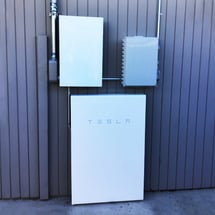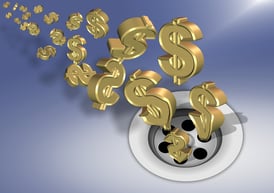The solar industry, clean energy advocates and environmental organizations are reeling from the California Public Utilities Commission’s (PUC) December 15th approval of Net Energy Metering 3.0—an update to the main solar program that makes solar affordable for California residents.
We’re not sugar-coating the downsides of the new program, but as the dust begins to settle, we want to offer you a straightforward, factual description of the pros and cons in NEM 3.0. Because there is some good news mixed in with the bad. And solar, especially when paired with batteries (also called energy storage systems), remains a better option than continuing to rely on the utility for all of your electricity.
The Pros and Cons of California’s NEM 3.0

Here, in a nutshell, are the positive and negative aspects of the state’s new approach to compensating solar owners for solar energy they send into the utility grid. Some of these are bad things that didn’t happen, so maybe these “pros” are really a silver lining.
Pros
- The financial benefit when pairing solar energy with batteries will increase significantly.
- Homeowners may still get into the more generous NEM 2.0 program if their interconnection application is filed by their solar installer by April 13, 2023.
- Existing solar owners are grandfathered in and continue to receive NEM 2.0 benefits for 20 years from the date they received Permission to Operate from the utility.
- Existing solar owners, and new solar owners who get into NEM 2.0 prior to April 13, can add batteries without losing their NEM 2.0 status.
- No new fees, charges or “solar taxes” were approved.
Negative
- The price the utility pays homeowners for extra electricity you send into the grid will drop by around 75%.
- The utility will measure the solar you send into the grid approximately every 15 minutes, making it harder to offset electricity you take from the grid with a credit for the electricity you send into the grid.
Despite the changes, solar remains an easy, safe, non-polluting way to reduce your electric bills and gain some independence from the utility.
More on the Cons of California’s NEM 3.0
The two major downsides of California’s new approach to compensating solar owners for any extra solar energy they send into the utility grid are substantial.
First, the price the utility pays homeowners for extra electricity will drop by around 75%. You can’t always use your solar right when it’s produced, for example if you work outside the home during the day when your system is generating power. Today, under NEM 2.0, the utility pays you (via a credit) a near-retail rate for any extra solar electricity you send into the utility grid, since that electricity is then used by other utility customers.
Under NEM 3.0, the price the utility pays you drops from around 30 cents per kilowatt-hour (kWh) to around 8 cents per kWh. Clearly that’s not a minor decrease—it’s more like going off a cliff.
The new rate is based on the utility’s “avoided cost” which loosely translates as what they would pay another power producer for the same amount of energy. In other words, it’s around the price the utility pays its wholesale providers. The formula for determining the avoided cost is complex, with prices fluctuating by month and by hour.
The new rates, and all of NEM 3.0 by the way, apply to customers of PG&E, Southern California Edison (SCE) and San Diego Gas & Electric (SDG&E). If you have a municipal light department, you are not subject to the NEM 3.0 ruling.
Second, the utility will measure the solar you send into the grid much more frequently—approximately every 15 minutes. Let us explain why this matters.
The concept of “net metering” or “net energy metering” means you get to balance out electricity you take from the utility with electricity you send to the utility. When your excess solar, i.e. solar you cannot use at the moment, flows into the utility grid, you receive a credit that you then use to buy power from the utility when your home needs it but your solar isn’t producing. Nighttime is the classic example of this situation. Under this scenario, you are getting nearly full retail value for all your solar energy.
Under NEM 3.0, you won’t be able to offset your utility power with credits from the solar power you made. The 15-minute measurement frequency is practically real-time. So any solar you don’t use is immediately considered an “export” of your power to the grid, and you are paid for it at the new, 75-percent-lower rate. This greatly reduces the value of your solar energy.
Both of those changes mean your monthly electric bill savings from solar will be a lot less than under NEM 2.0. But there will still be savings, and there are ways to reduce the impact of these changes, as we’ll get into below.
More on the Pros of California’s NEM 3.0
The financial benefit for pairing solar energy with batteries will increase significantly. Today, homeowners installing residential solar energy systems find the “return on their investment” (ROI) drops if they add battery storage. Under NEM 3.0, the ROI for combined Solar+Storage systems improves. It will be about the same as for solar alone today. This is because the state wants to encourage the installation of energy storage systems, so they re-designed NEM to make the combo more attractive. (And on top of that, you get the power outage protection of batteries.)

Homeowners may still get into the more generous NEM 2.0 program if their interconnection application is filed by their solar installer by April 13, 2023. We doubt any solar installer will be willing to promise its customers they can get into NEM 2.0. There are just too many variables outside of our control. However, Citadel Roofing & Solar will certainly be doing our best to get interconnection applications for as many customers as possible submitted by the April 13 deadline.
If you sign up for solar with Citadel by the end of January, we are reasonably confident we can get you into NEM 2.0. And it is certainly safe to say this: The sooner you sign up for solar, the greater your chance of getting into NEM 2.0.
Existing solar owners are grandfathered in and continue to receive NEM 2.0 benefits for 20 years. This is particularly heartening considering that the utilities lobbied for reducing the 20 years to 10 years but were unsuccessful.
Existing solar owners, and new solar owners who get into NEM 2.0 prior to the April 13 deadline, can potentially add panels and can add batteries without losing their NEM 2.0 status. At press time, Citadel couldn’t confirm if and how many panels might be added to an existing system; we will write about that later when clarification is issued. But it is clear that batteries can be added without risking your NEM 2.0 benefits, if you are lucky enough to be in that program.
No new fees, charges or “solar taxes” were approved, although the utilities proposed hitting solar owners with new fees of around $60 per month. This is a win for the solar industry and for consumers.
Putting NEM 3.0 Changes in Perspective
Despite the negative impact of NEM 3.0, it’s helpful to remember two things:
Yes, NEM 3.0 increases the number of years it will take for solar to pay for itself. But most home energy systems and home improvements never pay for themselves. Solar remains one of the few investments virtually guaranteed to pay you back.
Yes, NEM 3.0 will decrease monthly and lifetime solar savings for new solar owners. But you’ll still pay less for electricity than if you continue to buy 100% of your power from the utility.
Related Updates
As part of its NEM 3.0 order, the PUC approved “adders” for customers of PG&E and SCE, meaning they will buy your solar energy at rates slightly above their avoided cost. These adders are homeowner-specific, not house-specific. The adders will be available for five years, but will drop by 20% annually. Once you lock in your adder, that rate is guaranteed for nine years. This means the sooner you go solar, the higher the rate you’ll get.
The PUC also approved higher “export rates” for low-income homeowners, homeowners in disadvantaged communities, and residential customers in California “Indian Country” to use the state’s term.
The state’s Self Generation Incentive Program (SGIP), which offers rebates for storage systems, is being given additional funding to the tune of $900 million. This underscores the state’s commitment to energy storage.
The federal Incentive Tax Credit continues to pay you back 30% of the cost of solar and/or battery systems, in the form of a tax credit. In fact, the ITC was recently boosted back up to the 30% level, where it will remain for 10 years, through the end of 2032.
Getting the Most from Solar Under NEM 3.0
To maximize the value of your solar energy system in this new world of California solar, remember this:
- You want to hang onto as much of your solar as possible. You don’t want to export your solar to the utility’s grid if you can help it.
- When you do have to send your solar into the grid, do it during the times of day when you’ll be paid more for it.
Based on this new approach, Solar+Storage takes on a whole new definition of value. Combining the two systems is, without a doubt, the best way to get the most from your solar under NEM 3.0. Storing your excess solar in batteries, and then drawing upon that power when you need it, lets you keep the full value of your solar electricity. This is far preferable to sending your excess solar to the utility, which may feel like you’re sending your solar savings down the drain!

This new paradigm also puts increased importance on the design and sizing of your solar system. Today, Citadel often installs systems designed to “zero out” electric bills, so the solar panels produce enough energy to cover your monthly needs. That no longer works under NEM 3.0. We expect consumers will opt for smaller systems that cover less of your electricity needs, but that increase your ability to use all of that electricity yourself rather than sell it to the utility for peanuts.
Our solar professionals will conduct in-depth analysis of when you use your power along with how much you use, to build a user profile. Your system will then be sized to get you maximum value under these new rules. (Unfortunately, the new rules make it harder to plan for future needs like EVs or more electric appliances…)
Unknown Elements of California’s NEM 3.0
We should emphasize that the NEM 3.0 order has only been out a few weeks, and it will take time to fully parse what it means and how it will be implemented. Our comments in this post are based on the information available to us as of this writing. Some of the areas requiring clarification are the following.
The solar industry is seeking guidance on ambiguity in the NEM 3.0 order related to deficiency notices issued by utilities.
For new solar owners to slide into the NEM 2.0 program before NEM 3.0 goes into effect, your solar installer must file the interconnection package for your system with the utility by April 13, 2023. But the utilities have been known to reject interconnection applications for one typo or omitted character or symbol. This begs the question: If your interconnection application is filed before the April 13 deadline, and the utility rejects it and issues a deficiency notice after April 13, can you still get into NEM 2.0 once the installer adjusts the application to the utility’s satisfaction?
Also, rules for commercial business owners and for homebuilders have changed under NEM 3.0. The changes are similar to what’s reported here for residential solar, but not the same. Contact us if you’d like to discuss how we think NEM 3.0 will impact your multifamily development or commercial solar project.
Where Does This Leave Solar?
Solar energy systems will still deliver these benefits, even under NEM 3.0:
- The ability to make your own power for a lower rate than the utility’s rate, thus saving you money on your electric bills
- Some energy independence from the utility
- Access to incentives like the federal Incentive Tax Credit and the SGIP rebate program (for batteries)
- If paired with batteries, the ability to store your solar energy so you can use it yourself
- If paired with batteries, the ability to have electricity in your home during utility power outages.
Citadel projects that your electric bills with solar will be lower than if you bought all your electricity from the utility whether you pay cash for the solar, finance it with a loan, or enter a lease or Power Purchase Agreement (PPA).
We know NEM 3.0 sounds complicated, but a good installer will do all the calculations and analysis for you, and design the best system for your needs. If you have questions, give us a call at (800) 400-2852 and we’ll explain in more detail.
To learn more about solar, see our blog articles on:



